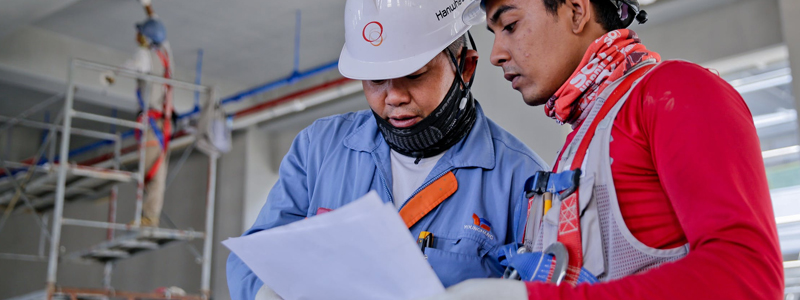
What is a Safety Management System (SMS)?
Many workplaces recognise the importance of workplace safety and most even commit some focus and resources to workplace health and safety, yet many still fall short of successful operational safety and health (OSH). Often this is because of a lack of a formal system in place to hold managers and employees accountable for health and safety and to ensure that there is continual improvement. That’s where a safety management system (SMS) comes into action, but what is a safety management system (SMS) and what does it entail?
What is a safety management system (SMS)?
The basic definition of a safety management system or SMS is a series of processes put in place to assesses, implement and manage safety in the workplace. The goal of an SMS is to improve safety to protect employees, customers and the company itself. Only a comprehensive safety management system can ensure that all the safety elements in a workplace are addressed and that everyone in the workplace is working towards health and safety improvement.
The main processes of a safety management system
There are various models and formats for an SMS that are recognised and used around the world and there are even formal qualifications available. The different models may use varying terminology and it’s up to the company which one they choose to follow but all of them have very similar structures and address similar processes. The guidelines set out by the International Labour Organization (ILO) are some of the most widely recognised. They have been established by the United Nations and are considered international standards.

Policy
The first step is defining formal policy statements that outline the management commitment, health and safety targets, resources and to generally promote health and safety to employees and throughout the company.
Organising
This step assigns responsibilities and accountability of health and safety to various people and groups in the company depending on the organisational structure. It should also outline what training is necessary for certain parties to carry out their responsibilities.
Planning & Implementation
This should include an initial review and risk assessment followed by health and safety objectives to answer safety challenges and meet the safety needs of the business. Look at prevention and control measures, preparedness and response, and resources.
Evaluation
Monitor and measure performance and the success of safety implementations as well as a system for investigating work-related injuries, ill health, diseases and incidents. Set out a timeline and format for management reviews.
Audit for improvement
Schedule and plan for regular audits and ongoing risk assessments to identify and implement the necessary corrective measures. Along with keeping employees informed, trained and engaged with health and safety, this will ensure a culture of continual improvement.

Who is involved with the safety management system
An SMS should involve everyone in the company as safety effects everyone and can only be identified and addressed with the help of everyone. Managers and personnel should have responsibility and be held accountable for implementing and managing certain safety processes in various areas of the business, but employees will need to commit to the SMS and communicate safety risks that managers may not identify themselves.
The benefits of a safety management system
There are many benefits to implementing a comprehensive safety management system as a way of improving health and safety at work.
- A formal policy that is recognised and understood by everyone in the company leaves no room for confusion about health and safety.
- Top-down commitment from management and commitment from all employees to achieve safety goals.
- Individuals that are responsible and accountable for safety processes means problems can be identified and traced back the responsible party quickly for resolution, and any process is easier to implement and manage when it is divided amongst more people.
- Establishes open communication throughout the whole company for transparency and continual safety improvement.
- Overall reduced illness, injury and other workplace safety problems.
Overall, improving safety at work protects employees, improves overall performance and can even save money by eliminating the costs associated with sickness and absenteeism not to mention potential damage to the workplace itself from accidents.

Who benefits from a safety management system
Any company can benefit from a safety management system as every workplace has some degree of safety risk. A comprehensive SMS following the format outlined by the ILO is especially beneficial to labour focused workplaces and other workplaces that are considered high risk because of the equipment they work with or what they produce. Typically, aviation, petroleum, chemical and electricity generation industries are all good candidates for an SMS but every company should look at whether a safety management system could help them.
At The Ramp People, we understand the importance of workplace safety in many industries. Our range of workplace safety equipment has been selected to help all types of workplaces from aviation to warehouses. Safety equipment should be a key part of your safety management system to help action the policies you put in place.
